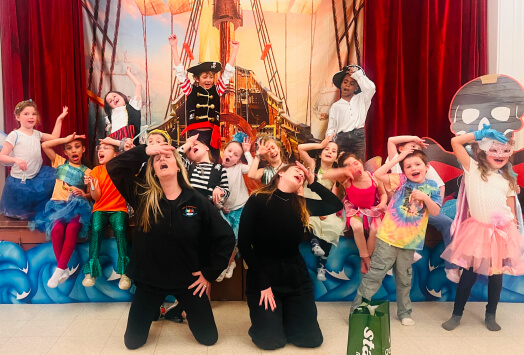A small business's digital marketing tool belt can never be complete without a comprehensive, effective SEO strategy in place.
Here's the gist: SEO, or Search Engine Optimization, is the process in which certain words and phrases are used within an organization's web-based assets, triggering search engine algorithms so that the business can organically rank as highly as possible based on those specific search terms.
Whew! Now you have a go-to definition when someone asks you "What is SEO?" You're welcome.
Let's dive into some more details to help get your SEO strategy dialed in! Plus, how optimizing your content with SEO in mind can help your children's activity business.
1. What is SEO, more specifically?
If you're wondering how SEO works from a backend perspective, it basically boils down to this: search engines like Google use bots (also known as "spiders" in this space) that crawl the Internet, searching for terms and phrases to determine Search Engine Results Page (SERP) ranking.
So many acronyms, so little time!
Those spiders are considering a number of components (which we will list below) to make their determination as to whether or not a site will rank well (or at all) for certain search terms.
To put it succinctly: The better your SEO strategy, the more likely you are to acquire new customers/clients. More visibility=more conversion.
Google is obviously the big search engine on campus, so whatever SEO content you generate, you're basically catering it to Google-specific searches. This is important to keep in mind as we continue on.
2. SEO Components
Your small business's SEO strategy needs to consider these umbrella components to give yourself the best chance of ranking higher, achieving organic (unpaid) results.
Content
The following phrase is in no way something we came up with, but it is absolutely gospel: content is king. The content you write for your site needs to be concise, informative, and relevant to the specific searches you are hoping to capture.
For example, imagine you operate a children's activity service teaching kids about theater and dance. What search terms are you hoping to capture? "Dance education for children"? "Theater for kids"? Whatever you decide on, use those phrases as naturally as possible in your website. Google rewards natural-sounding content.
Title Tags
On Google, the title tag is the blue (or purple, if you've previously visited) hyperlinked text that appears on your searches.
According to Google, this title needs to be between 40 and 60 characters so that the full title actually appears on the SERP. Your website page titles will be the ones being crawled for this.
You also need to avoid over-stuffing these title tags with keywords because Google will actually punish that behavior by relegating it in rankings. Keep your page titles tight.
Site Architecture
Your website needs to be well-organized, regularly updated, and secure for search engines like Google to even consider it for ranking.
3. Keep doing your research
Any time you spend as a small business owner doing research on important topics like SEO is time well-spent. Continue the research. Questions like "What is SEO?" are a great starting point.
Keep going.
Your business needs to be on its toes. Digital marketing is an industry moving at breakneck speed, and is highly competitive. So be sure to keep up and stay informed. See what highly-ranked sites in your industry look like—pay attention to their title tags, their content, and their websites' usability.
Here at Sawyer Tools, we are committed to keeping you informed and organized with your children's activity/education business.
Contact us for a free demo today to find out what we are doing to help small business owners just like you.





















.png)






.avif)






.avif)
.avif)





